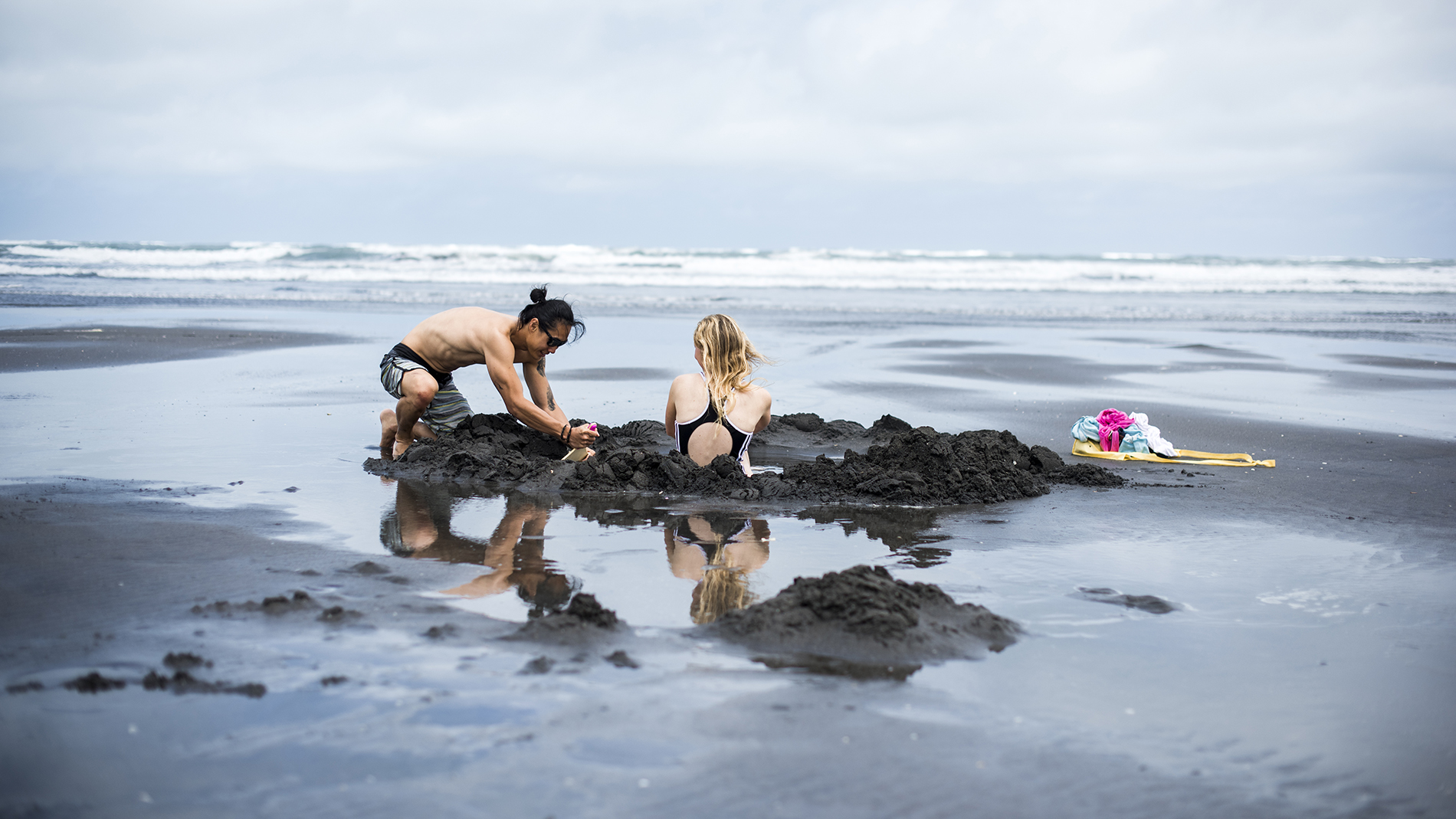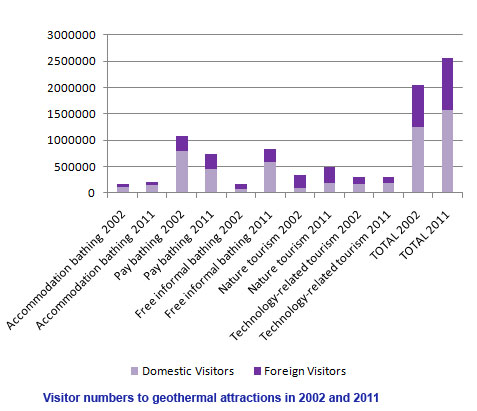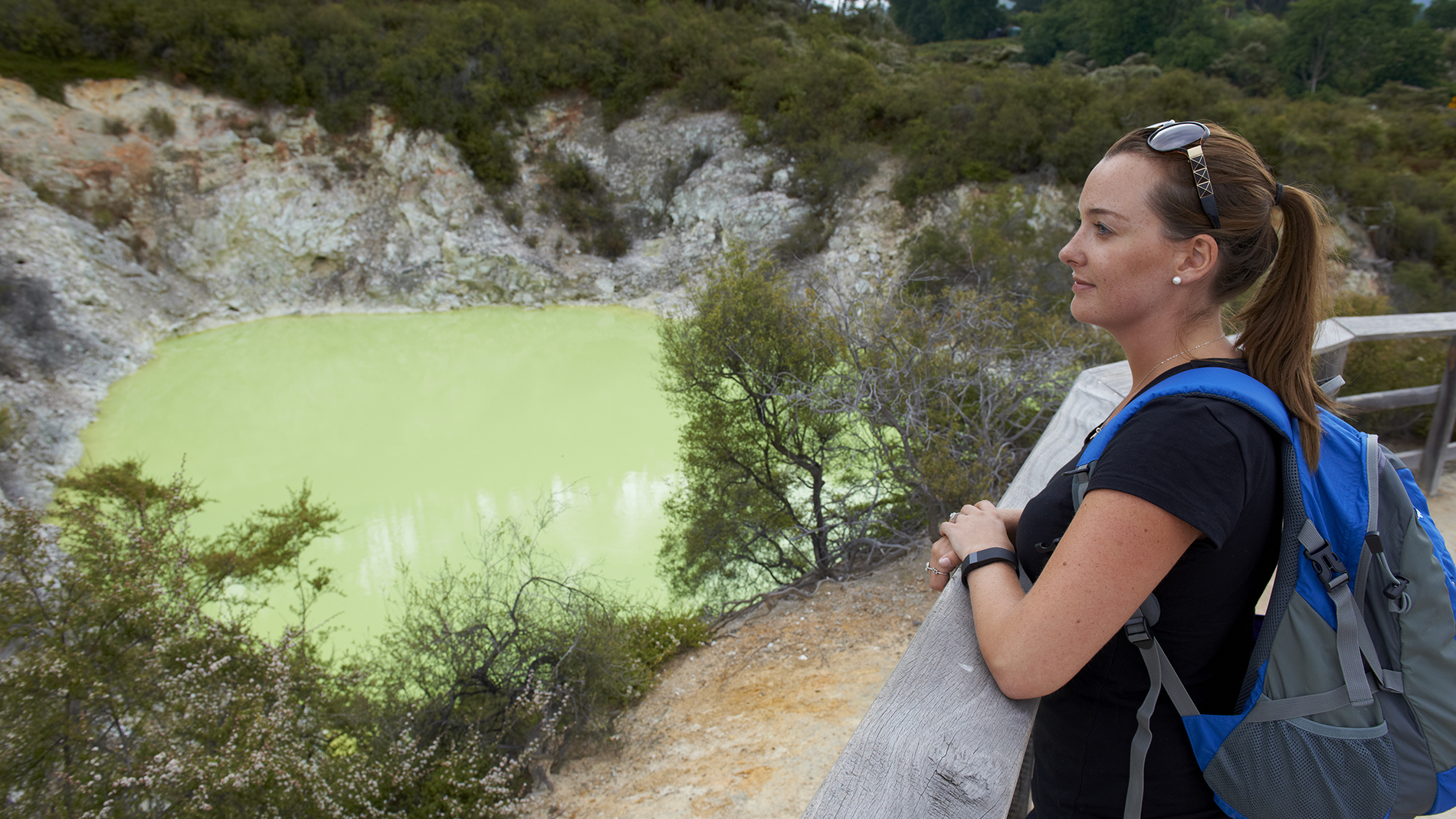Geothermal tourism in the Waikato region
The Waikato region is home to internationally important geothermal sites visited by both domestic and international tourists. Generally tourism has few negative effects on geothermal features, and with careful management effects can be minimised. In general, geothermal features found in tourist areas are looked after by the tourism facility staff and therefore are better protected than those outside tourism areas.
New Zealand is known world-wide for its geothermal attractions. Our geothermal features are major tourist attractions for both domestic and international visitors. The only other area equally well known is the Yellowstone National Park in the United States.
Most of New Zealand’s geothermal areas are found in the Waikato region. In 2011, there were more than two and a half million visits to geothermal attractions in the Waikato region. Find out more by reading Technical Report 2011/15 (Valuing uses of the Waikato Regional Geothermal Resource).
The effects of tourism on our geothermal resources
Generally, tourism has little negative effect on the geothermal resource. Geothermal tourism provides local employment, brings tourism dollars into the region, and aids New Zealand's foreign exchange balance. It is worth approximately $206 million to the regional economy. Geothermal tourism also promotes public awareness and support for preserving natural areas.
However tourism can affect some geothermal features:
- Pumice and gravel used on tourist tracks has spread across and changed fragile sinter surfaces.
- Pathways cut across sinter terraces, stopping regeneration.
- At Tokaanu, many of the geothermal pools are partially drained to stop them flowing across the tourist path.
- In the past, the ground surrounding the Champagne Pool at Wai-O-Tapu was being eroded by foot traffic, leading to a risk that the pool surrounds may collapse. This has been remediated by putting a boardwalk across the area to prevent further erosion.
Find out more about the geysers and sinter springs in the Waikato region.
A sustainable industry
For tourism to be sustainable long-term we need to preserve and protect our geothermal attractions.
Through regional policy, consents and education we ensure this by:
- Making sure that the supply of geothermal fluid to surface features and to small-scale users isn’t affected when geothermal fluid is extracted from underground sources.
- Making sure that the materials used to build roads and tracks do not contaminate geothermal features; that the flow of geothermal water across sinter terraces is not diverted; and that foot traffic will not erode the land surrounding the features. The best way to do this is to use boardwalks above ground level, rather than paths.
- Preventing people from getting too close to geothermal features so that the features are protected from vandalism and accidental damage.
Monitoring Visitor Numbers to Geothermal Areas

Why we monitor visitor numbers to geothermal areas
This indicator monitors:
- Estimated domestic and international visitor numbers to geothermal attractions in the Waikato region in 2011.
- Visitor activities at geothermal attractions in the Waikato region in 2011.
The world’s two most well-known areas for geothermal sightseeing are New Zealand and Yellowstone National Park in America. The Waikato region contains about 70 percent of New Zealand’s geothermal resources and features, however the Bay of Plenty region is home to New Zealand’s most visited geothermal attraction, Whakarewarewa in Rotorua.
Geothermal systems are valued for their:
- energy resource
- tourism income
- unique ecosystems
- cultural values
- spiritual values
- amenity values
- historical values.
Geothermal attractions are an important part of the Waikato region’s economy. They have spiritual and cultural importance to local Maori (Tangata Whenua, or ‘people of the land’) as well as being an important tourist attraction. Monitoring the number of visitors indicates what types of geothermal attractions are important to people and the economy.
What's happening?
Visitors can threaten the natural character of our geothermal areas. A balance must be maintained so people can visit or use these areas without degrading or destroying them. Other pressures include activities such as energy use and nearby land use.
Damage to geothermal areas can occur through:
- people not keeping to designated pathways
- walking routes eroding due to foot traffic (although wooden boardwalks help prevent this)
- gravel from the paths contaminating sinter pools and terraces
- modifying pools for human use, changing their natural appearance
- vandalism
- littering
- farming activities (for instance, through stock damage, runoff and siltation).
Find out more about threats to geothermal resources.
In 2011, approximately 2.6 million people visited geothermal attractions in the Waikato region - 60 percent from New Zealand (1.6 million) and 40 percent from overseas (1.0 million). Public bathing at geothermal attractions was the most popular activity with both groups. The second most popular activity for international visitors was ‘nature tourism’, and for New Zealanders, two of the region’s technology-related sites (Wairakei Borefield and the Prawn Park near Taupo).
Methods - How we monitor
Results - data and trends
Visitor numbers to geothermal attractions in 2002 and 2011
The graph below shows how many people were estimated to have visited the Waikato region’s geothermal attractions in 2011. It also shows the activities visitors preferred:

Download the data file
This Excel file contains the source data to this indicator's graph and any additional data. The data were collected in the year ended June 2011.


